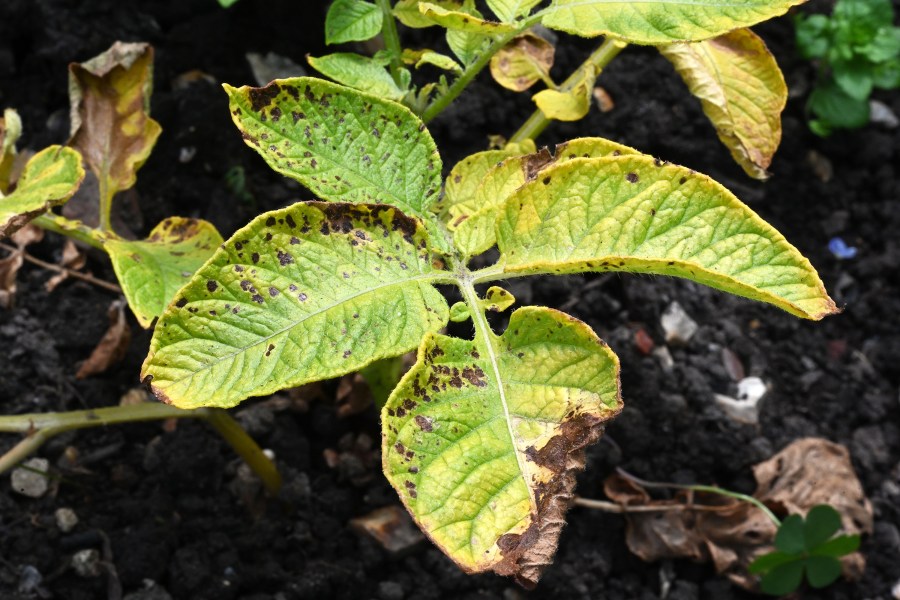Infections of early blight (alternaria) are already being reported as a result of this year’s challenging potato season.
The disease is historically seen from mid to late July, but climatic weather patterns mean it’s hit early this year with instances of plant die-back.
Syngenta’s Andy Cunningham says crops slow to establish in cold, wet seedbeds have subsequently been hit by prolonged periods of high heat and light stress, intensified by growers cutting back on fertiliser inputs.
“These have all compounded the risk of stresses that make potatoes more susceptible to alternaria infection,” he says.
Mancozeb availability
A reduction in mancozeb availability and its reduced use in extended blight programmes during the dry weather is believed to have given the disease a head-start.
“That further exacerbates the issues of spore production and spread across fields and between crops. Growers and agronomists might consider using Amphore Plus (difenoconazole + mandipropamid) in their blight strategies now, possibly one or two sprays earlier in the programme than would usually be the case,” advises Andy.
Monitoring research
Successive years of a Syngenta alternaria monitoring initiative, with sampling and analysis by NIAB, highlights the consistent presence of multiple species spores throughout the crop growing cycle.
The study shows prolific A. alternata infected potato leaves earliest in the season, followed by the larger lesions of A. solani becoming more prevalent later, frequently on the back of damage caused by A. alternata infection.
“That’s a really important finding, which is contrary to potato industry thinking at the time,” explains Andy. “It reinforces early use of Amphore Plus as it provides the highest possible loading of difenoconazole.
“It also means potatoes are receiving blight protection of the full rate of mandipropamid in the same application,” he says.
Preventative approach
Later in the season, Andy says agronomists can use Amistar (azoxystrobin) in the blight spray programme for alternaria protection against the later infecting A. solani. However, any fungicide treatment must be applied preventatively.
“If you catch infection early, or when just a limited number of plants in the crop have been affected, the clean plants can still be effectively protected,” he concludes.
For more information about alternaria, read this CPM article.




